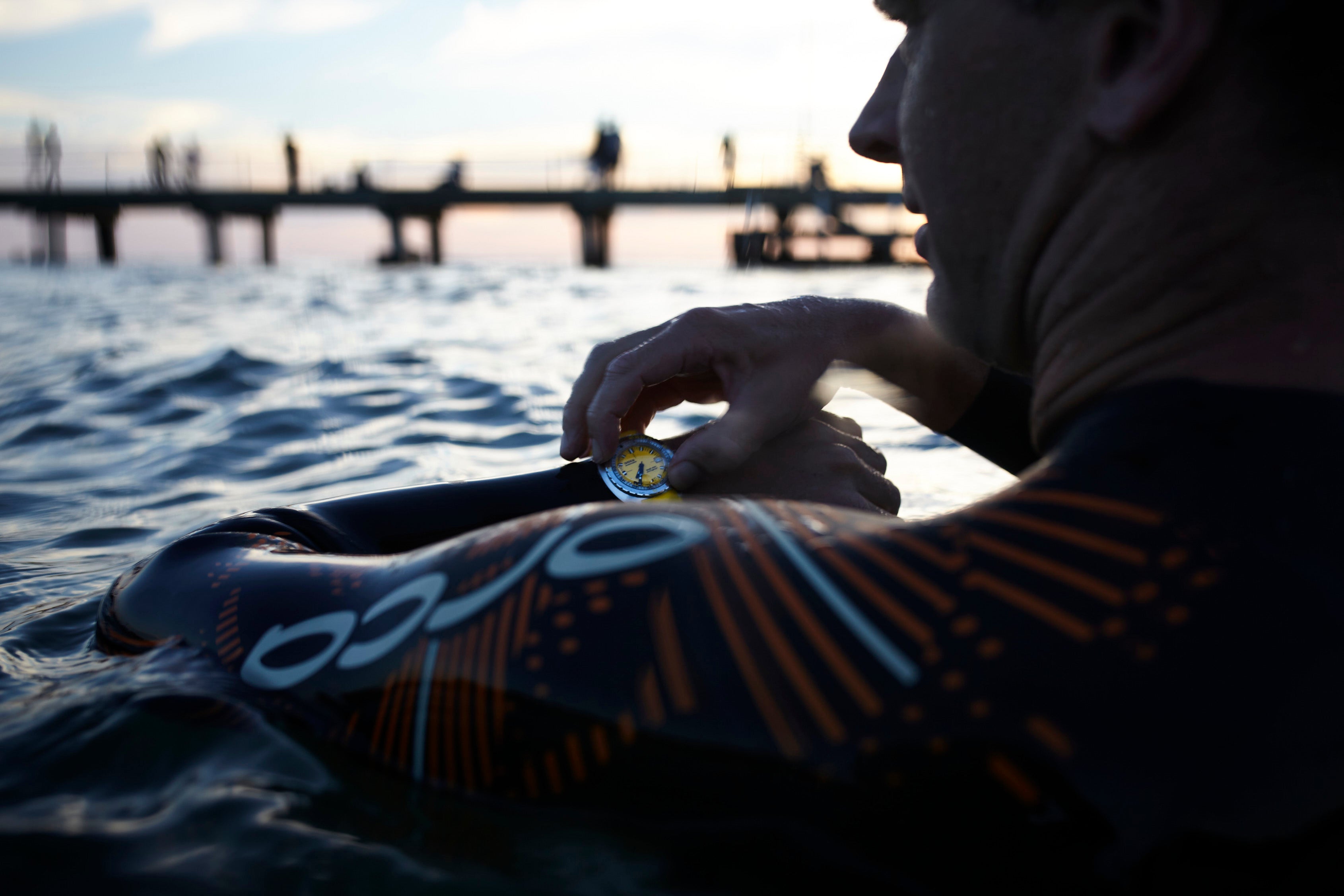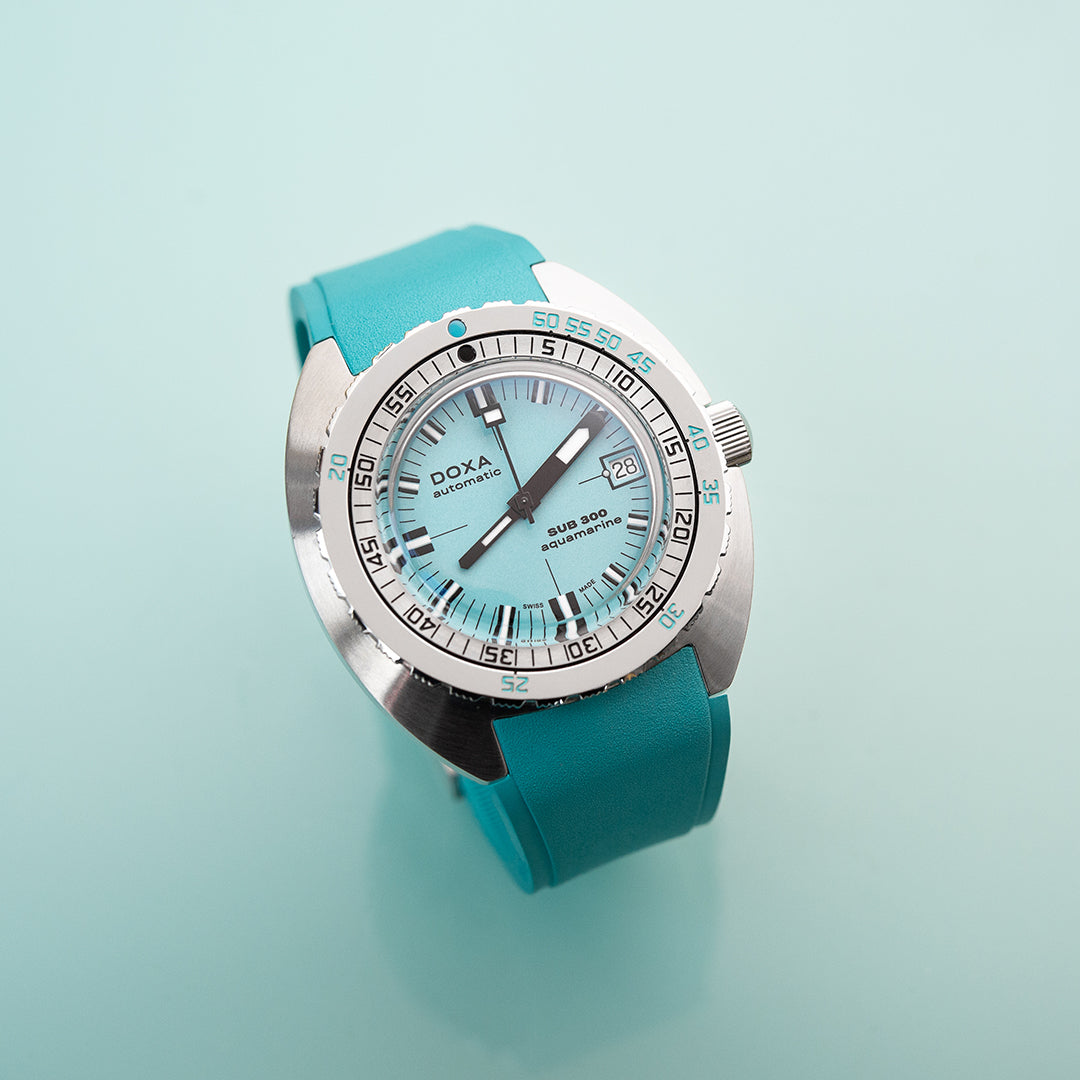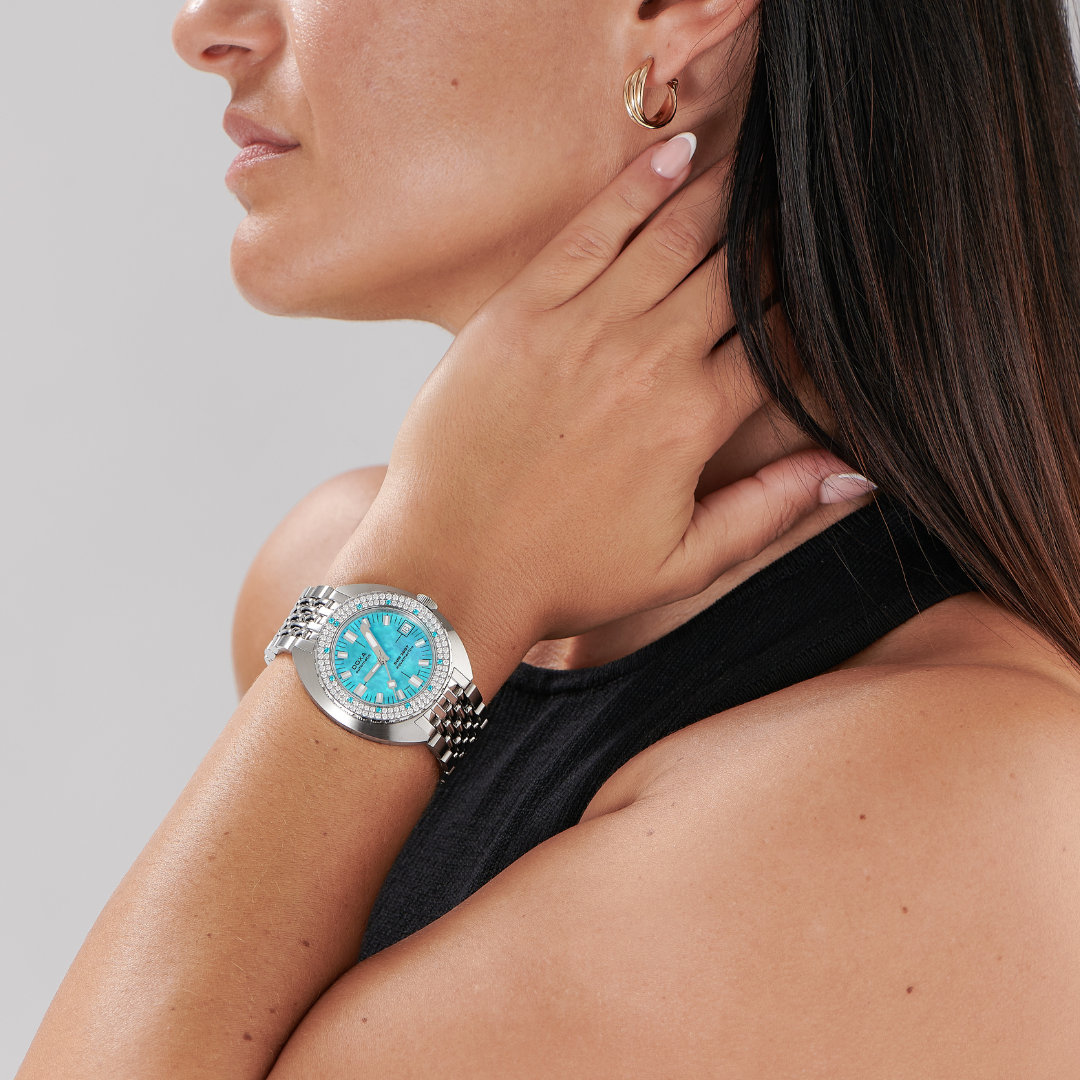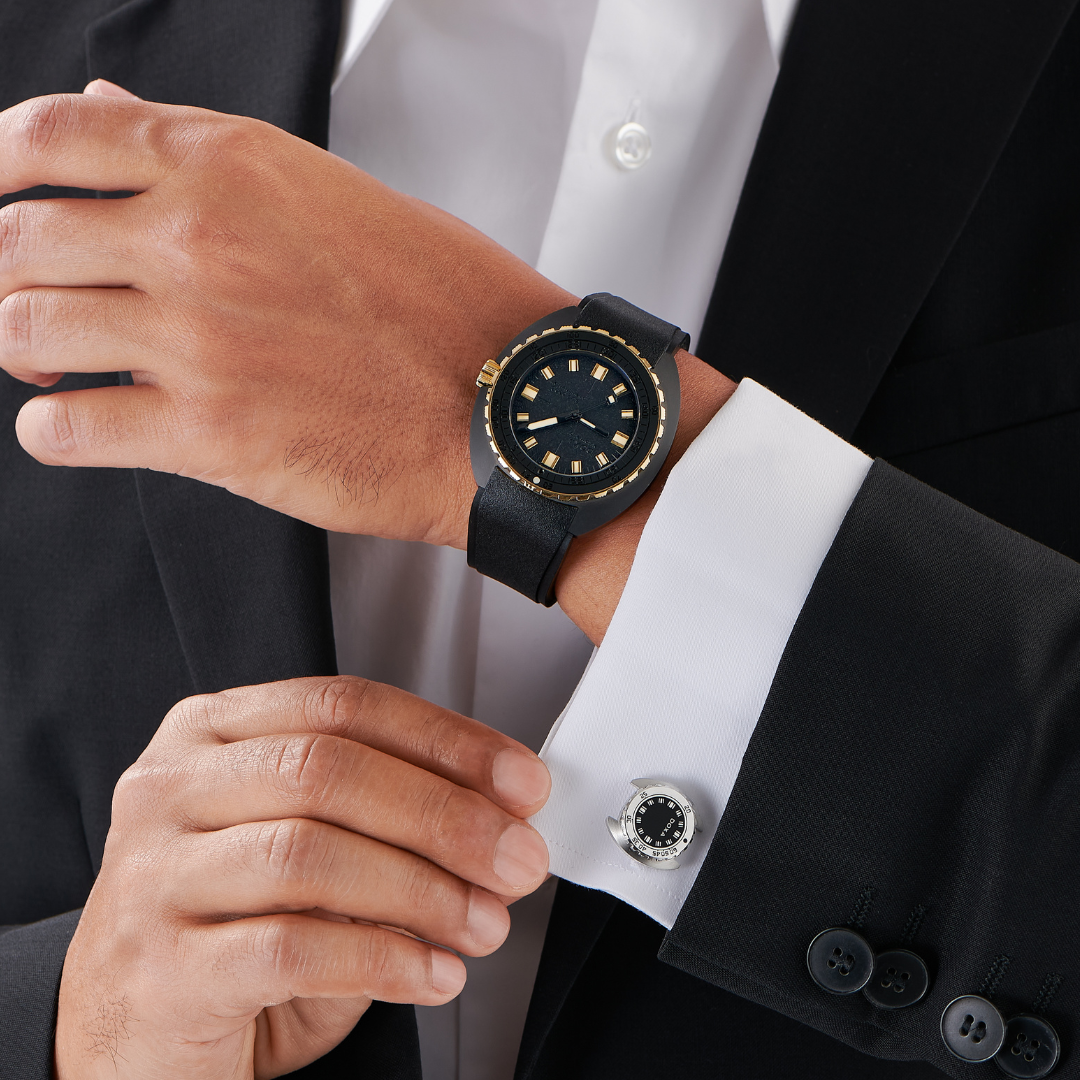
The DOXA SUB 300T – A Life Saving Tool
The SUB 300T, with its extensive range of cool colorways, is both fresh looking and sporty in equal measure. As current and relevant as watches such as the SUB 300T are, dive watches are actually an anachronism that hark back to the days before digital and computer technology. The golden era of racing and diving will always be looked back on with fondness and celebrated for its daring element that is tinged with both danger and excitement. The dive watch is one such accessory that is rooted in a lifesaving tool for divers, hence the term tool watch. In order to dive safely, a diver needed to be able to keep a reliable track of time and in the 1950s the answer to this was a waterproof wristwatch. And make no mistake, the SUB 300T, whilst every bit the cool 21st century sports timepiece, is a watch that is suitable for all levels of diving, from professional saturation work to shallow snorkeling.

The new SUB 300T continues the legacy of the vintage DOXA professional dive watches, with the brand’s ‘No Deco’ bezel and helium release valve. The original and iconic orange dial is still present in the collection, alongside six other colors including yellow, turquoise, blue, silver, black and white. Truly a dial to suit all tastes and environments! This is important, because a dive watch requires a highly legible dial and hands that can be used in conjunction with a rotating bezel to monitor the elapsed time spent underwater. In the past, these watches would be paired with a wrist-mounted depth gauge, the diver could monitor his depth and time spent at each stage to calculate a safe return to the surface. Without periodic pauses in the ascent to the surface, the nitrogen that forms in the blood at high pressure cannot dissolve and forms bubbles in the blood that causes decompression sickness. To ensure a safe dive, therefore, a diver needed three key pieces of equipment; a waterproof watch with rotating bezel, a depth gauge and a set of waterproof printed tables or charts that showed how long an ascent was needed depending on the depths that the diver went to.

In 1968 DOXA unveiled the original SUB 300T Professional, a watch that featured a new, patented rotating bezel. This bezel is still in use today on the latest version of DOXA’s diving watch. By aligning the luminous dot on the bezel with the minute hand, the elapsed time of the dive could be easily monitored, as per the standard for dive watches. The ingenuity of the DOXA bezel was that it had two sections, the usual elapsed time ring and a second novel scale, a combination called the No Decompression Bezel. This second, outer ring replaced the need to keep the waterproof tables on one’s person when diving and allowed a quick reading on the allowed time for each depth without the need to pause to decompress on the way back up to the surface.
The current SUB 300T has this outer ring colour matched to either the dial or the minutes hand. On the turquoise, yellow and orange dials (the Aquamarine, Divingstar and Professional to use their model names), the readings on the outer bezel are colour matched. Where the dials are black (Sharkhunter), silver (Searambler) and navy (Caribbean) the outer text is orange to match the minutes hand. The understated white dial (Whitepearl) features a black and white colour scheme with black bezel readings.

The dual-scale bezel can be set in the same way as a regular dive bezel to measure elapsed time, but it also gives the diver an instant reading on how long you can spend at different depths. So, if you begin your dive at quarter past the hour, you simply align the bezel dot with the minute hand at 15 minutes. If you are planning, for example, to dive to 120 ft, a quick check will show that 120ft is in line with the 15-minute marker on the bezel; thus telling you that you can spend a maximum of 15 minutes at 120 ft without having to pause to decompress on your ascent. You only want to dive to 80 ft? OK, so check the bezel and you can see that you can spend a maximum of 40 minutes at that depth without having to decompress.
The new SUB 300T models also feature a helium release valve. The helium release valve (HRV) was first used by DOXA in 1969, on the SUB 300T Conquisitor, which also had the ‘No Deco’ bezel. The HRV was an important element of watches that were designed to be worn for saturation diving. During saturation diving, divers breathe an air mix that contains large proportions of helium. The issue is that helium particles are tiny and even the water-tight seals can’t stop them entering and building up in the case of a diving watch. It is during decompression, when the divers spend time in a chamber gradually having the pressure of their physical environment returned to atmospheric levels, that the built-up helium in the watch is desperate to escape quickly, the consequence being that the crystal literally ‘pops’ off the watch. To avoid this, a one-way valve built into the case side allows the helium particles to escape the watch during decompression without ever compromising the watch’s waterproofness.

Whether you prefer a steel bracelet or a color matched rubber strap. If you are diving in the cold depths of the Scottish waters or the sunny bays of the Caribbean. Leisurely snorkeling or professional saturation, whatever you need to do in the water, the SUB 300T is the perfect partner. Not only is there is a color for every occasion, but also every location. Check out our DOXA Dive Guide which will hopefully inspire you for your next trip!






